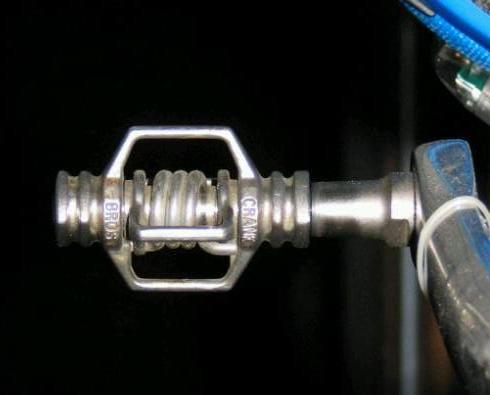
Eggbeaters for Touring
I've been using Eggbeaters for several years. They work well with SPD sandals and they work better than STP pedals. For touring, their biggest advantage is that they provide better support for my foot and therefore cause me fewer problems with feeling a hotspot or with numb toes.

The Original Eggbeaters
Last summer, which was my second summer touring with Eggbeaters, I had a pedal failure on one of my original Eggbeaters, and bought a new pair of Eggbeaters in Durango Colorado. The new SL pedal is similar to the original, but has better seals and, more importantly for touring, a new setup for grease injection.
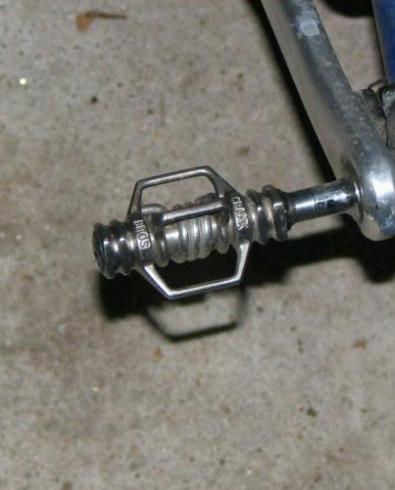
The New Stainless Steel Eggbeaters
Since I do long tours, my pedals are going to be exposed to bad conditions - e.g. immersion in water - in the middle of my tours. There are three ways that this can be dealt with. The first is by making the pedal so well sealed that water doesn’t get in it even if it is immersed. The second is by making the pedals easy to rebuild after water does get in. The third is by providing a grease injection port that allow me to flush the water contaminated grease without rebuilding the pedal.
Shimano MTB pedals try the first way, but don't really succeed.Their seals were good, but I had several pedals need rebuilding on tour, and one that I did rebuild while I was staying with a friend and had some of his tools available. They are VERY hard to rebuild without special tools.
The original Eggbeaters took the second approach. Their seals were lousy, but they only took a few minutes to rebuild and I preferred that to having to put up with non rebuildable Shimano pedals that needed rebuilding! The only tool required is a small, standard, Allen wrench. When touring, I rebuilt them after every rainy day of riding and every time I cleaned and lubed my chain. This was not a big deal.
The second generation of Eggbeaters has improved seals and are still easy to rebuild, but also feature a grease injection system that should make frequent rebuilds unnecessary.
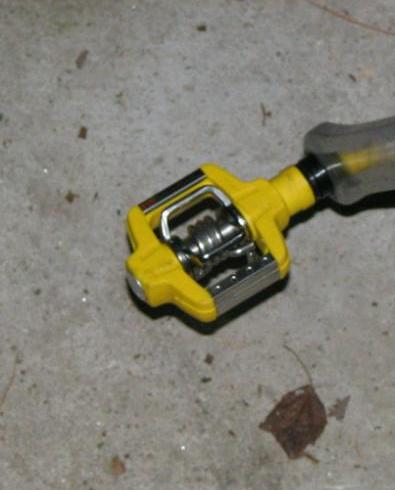
Candy C Eggbeaters
Recently, I bought a third type of Eggbeater pedals. I needed a new set of cleats - they wear out cleats much faster than SPD pedals - which cost $20, and these pedals were on sale for $40 and included a set of cleats. I think $20 is a very good price for any decent pedals, and these are better than just decent!
The new pedals, called Candy C Eggbeaters, have an extra section around the pedal which provides extra support for my foot and should, because of this, be an even better touring pedal.
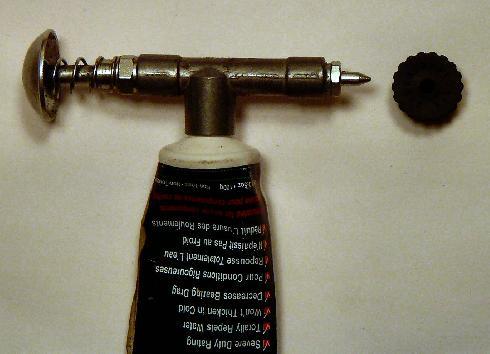
Bicycle Grease and Gun with
Eggbeater Adapter
Image courtesy Jamie Noble, Bicycle Touring 101
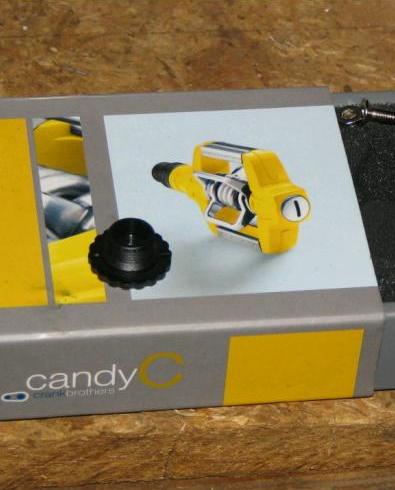
Candy C Eggbeater Box with Adapter
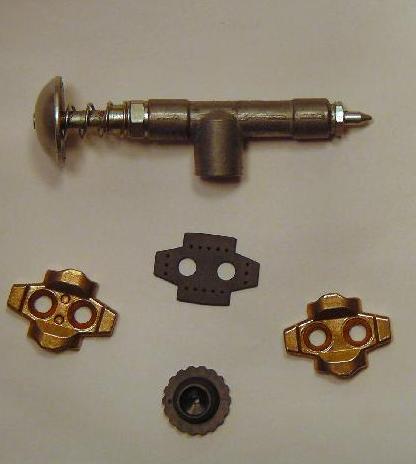
Eggbeater Parts and Grease
Gun
Image courtesy Jamie Noble, Bicycle Touring 101
Both the pedals I bought last summer and the Candy C pedals have a threaded plug (with a slotted head) that can be removed to rebuild or relube the pedal. Relubing is done by replacing that plug with an adapter that mates with the conical head on a bicycle type grease gun. You can see this adapter and the end of a Candy pedal with its slotted plug in the middle image above. A grease gun, like the one shown in the top image, is used to pump grease from the tube into the pedal. The bottom image shows the grease gun without the tube of grease, a set of Eggbeater cleats, the spacers that come with the pedals to adjust cleat height, and the grease adapter. I needed to use those spacers on the shoes I use with the Candy C pedal.
Grease is pumped through the hole in the adapter - which you can see in the bottom image - until it comes out the other end of the yellow part of the pedal. This lubricates both bearings in the pedal and flushes out any contamination. I have some old Suntour Grease Guard pedals that have a similar lubing system and they are still going strong after a decade of use which included about 10000 miles of touring.
The Candy pedals are heavier than the more expensive Eggbeaters - but still lighter than most SPD pedals. They use the same cleats, the same bearings, and the same injection adapter as the more expensive models. As you can see if you carefully compare the images above, the actual mounting mechanism is narrower and the spring that it uses is shorter than on the more expensive models. I found it easier to clip in and out on the Candy pedals. I think the more expensive pedals may hold the rider in more securely, but I prefer the easier release of the cheaper pedals. I worry more about my pedals not releasing in a crash than about them releasing accidentally.
Regular Eggbeater pedals are almost impossible to ride in normal shoes. Candy pedals are much better. I wouldn't want to ride all day without bicycling shoes, but they do make it possible to ride short distances without putting on special shoes. They also feel like they offer significantly better support than regular Eggbeaters when riding clipped in.
They have another advantage for touring; unlike regular Eggbeaters, the Candy C pedals work pretty well with an SPD shoe without a cleat! Regular Eggbeaters offer very little lateral support, so my feet tend to roll off the outside of the pedals if I'm not clipped in. Candy C pedals have lateral support similar to old fashioned pedals. With the Candy pedal, it is possible to ride long distances after removing a worn or damaged cleat from the shoe. While wearing SPD sandals with the cleats removed,I found them no harder to ride than conventional pedals.
I'll wait till I use them for real touring before making final judgment, but I think I'll be using them when I tour next summer.